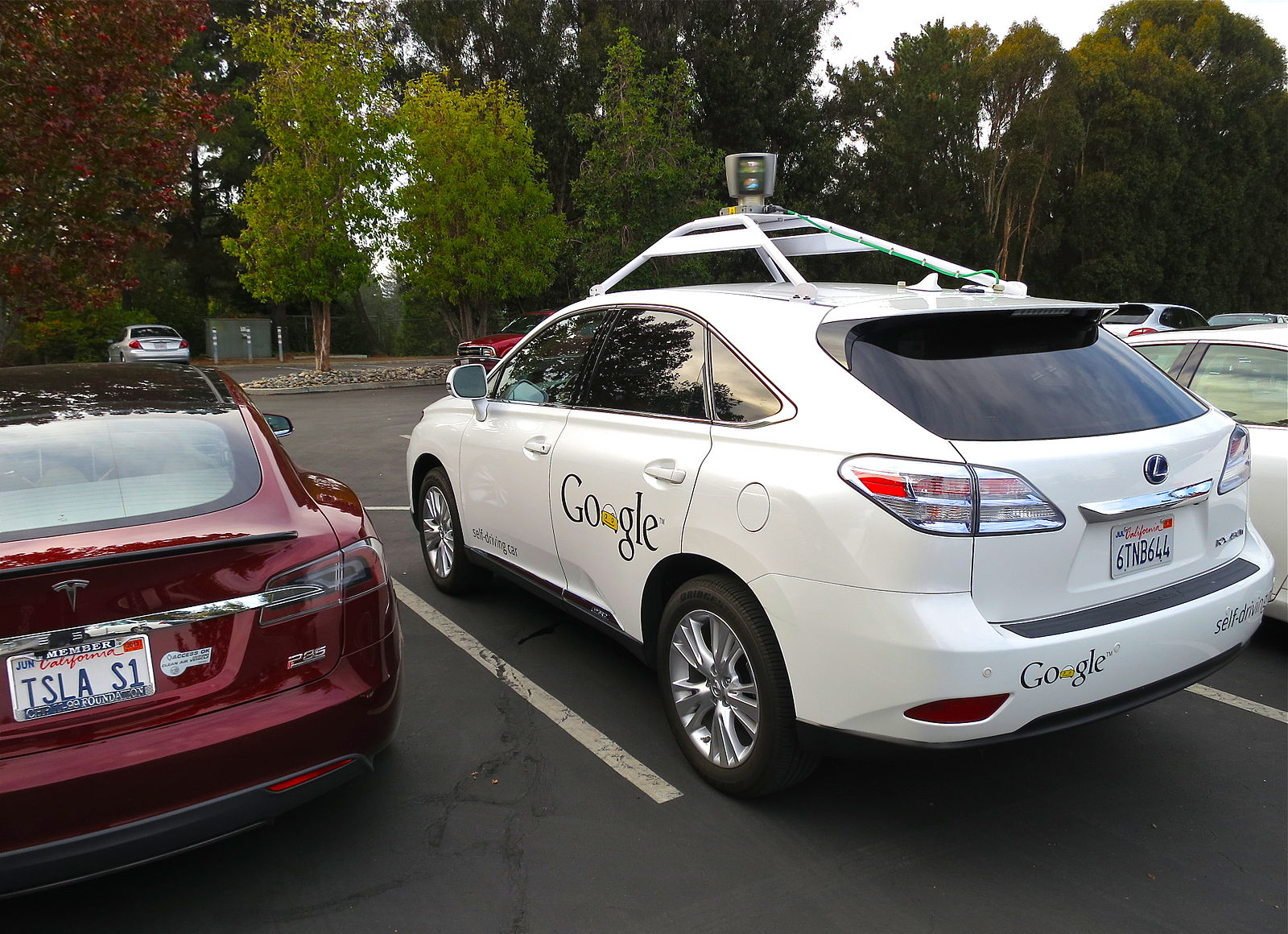Several facilities and institutions at the University of Maryland could expand their driverless vehicle research and testing in 2018 if a proposal under Gov. Larry Hogan’s administration is approved.
The state of Maryland submitted a proposal this past December to join a U.S. Department of Transportation program that aims to increase investment in driverless technology, improve its safety and hasten its arrival on roads across the county, wrote Chuck Brown, Maryland Motor Vehicle Administration external affairs manager, in a Dec. 30 email.
State transportation officials are interested in developing a host of safe automatic car technologies, ranging from autopilot features, such as automatic braking and parking assistance, to completely driverless cars that rely on sensors and a central computer to navigate the roads, according to the state’s application.
The proposal includes driverless vehicle testing on an area of the I-95 corridor that stretches from the Aberdeen Proving Ground in Harford County to this university’s region. Driverless vehicle testing would be conducted on private racetracks before being deployed on public roadways, Brown wrote, adding that the area was chosen because it provides “numerous private testing locations” and unique opportunities for self-driving car testing, such as moving freight in and out of the Port of Baltimore and shuttling passengers at BWI airport.
If the I-95 corridor is selected early this year, this university’s Autonomous Vehicle Laboratory, Center for Advanced Transportation Technology Laboratory, Maryland Cybersecurity Center and National Transportation Center could play a role in bringing the driverless vehicles to fruition, according to the application.
The CATT Lab is one of the largest transportation research and development centers in the world, according to the state’s application, and includes more than 100 engineers, software developers and researchers. It develops technology and designs software for innovative transportation systems used by both the military and private companies such as Google.
The lab is currently working on data feeds that provide access to real-time accident reports, weather and traffic conditions that could be used to both assist autonomous vehicles’ technology and collect data on how well they are performing, said Mark Franz, a CATT Lab research assistant, on Thursday.
The lab is also developing mobile apps that could allow cars to communicate with one another. This, along with further research if the state’s application is approved, could make autonomous vehicle technology more affordable for everyday consumers, Franz said.
“Connected automated vehicles are … the future of the highway,” Franz said. “The challenge right now is the affordability of these technologies and making these available to civilians and the general public. … [We need] state agencies to have regulations for these technologies so that people are able to trust in them and operate their vehicle safely.”
Because driverless vehicles rely on wireless communication, hackers could potentially break into the system and cause crashes or communication issues, Franz said. In response, the CATT Lab is currently partnering with the Maryland Cyber Security Center and the National Transportation Center to work on strengthening cybersecurity in autonomous vehicles, according to the application.
And because of the CATT Lab’s national reach, other testing grounds for autonomous vehicles could use data collected in this state to inform their own research, he noted.
Various companies have shown an increased interest in testing self-driving cars, such as the ride-sharing giant Uber. The company began testing driverless cars in Pittsburgh last year with safety drivers who could switch the car into manual drive if needed.
However, some consumers have become wary of the new technology after several autonomous vehicle accidents over the last few years, said Ragina Averella, AAA Mid-Atlantic public and governmental affairs manager, on Tuesday.
For example, Tesla’s Model S was involved in the first known fatal self-driving crash last May after its automatic braking system may have failed while driving on a highway in Williston, Florida, according to news reports.
Multiple Google driverless vehicles have also been involved in accidents — most being minor incidents resulting from the car being rear-ended. However, a more serious accident in September in Mountain View, California, occurred when a driver smashed into the autonomous vehicle’s passenger side after running a red light. Google’s car braked but failed to stop in time to prevent the crash, The Guardian reported.
To address safety concerns, state officials are developing clear policies and procedures for companies interested in testing autonomous vehicles on public roads in the state, Brown wrote, adding that “safety is the priority.”
The state’s Autonomous and Connected Vehicle Working Group that helped draft the proposal is also working with the National Highway Traffic Safety Administration to set clear guidelines on how law enforcement will interact with autonomous vehicles.
The group’s recommendations to the administration include having clear external markings on all driverless vehicles, creating a way for law enforcement to signal the vehicle to stop and allowing first responders to disable the vehicles after a crash. Plans surrounding these recommendations are still in the works.
“Members of the Maryland State Police will continue to be a part of the planning process,” said police spokesman Greg Shipley on Tuesday. “Any testing plan for these vehicles will be not be implemented without the highest degree of safety planning possible.”
Further research on driverless vehicles could lead to safer driving conditions as well, Averella said. Approved, private racetracks will be ready to test autonomous vehicles by Jan. 1, 2018, according to a Dec. 21 state transportation department press release.
“Maryland is working to be in the forefront of rapidly developing autonomous vehicle technology — especially as it relates to safety,” Averella said. “Motor vehicle crashes are a leading cause of death, so technology and research on autonomous vehicles that can further protect occupants from harm and advance safety carries great life- and injury-saving potential.”
The Maryland Department of Transportation expects federal transportation officials to announce the first round of testing grounds early this year, Brown wrote.



